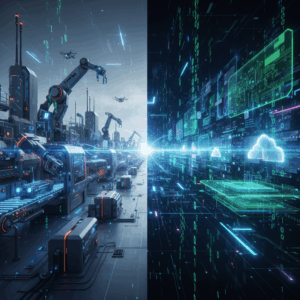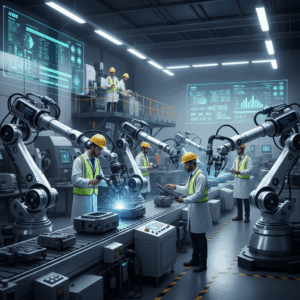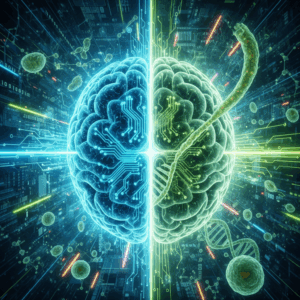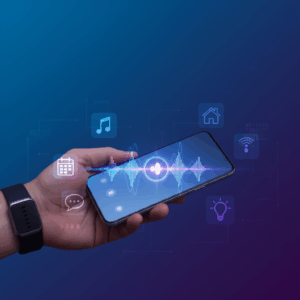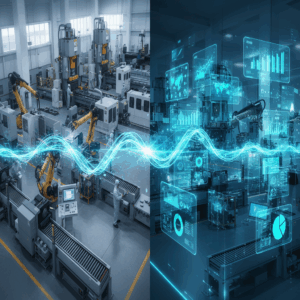Foundations of Biotech and Computing Fusion
The fusion of biotechnology and computing creates a new paradigm where the boundaries between living systems and digital technologies blur. This integration transforms how life sciences advance.
By deeply combining these fields, innovations in genetics, medicine, and synthetic biology have accelerated, enabling groundbreaking research and applications that were once unimaginable.
Historical Milestones: The Human Genome Project
The Human Genome Project was a pivotal milestone that showcased the power of integrating computational tools with biology. It unlocked the blueprint of human DNA at an unprecedented scale.
Without advanced computing capabilities, analyzing the massive genetic datasets from the project would have taken decades longer. This effort marked the dawn of modern bioconvergence.
Its success paved the way for personalized medicine and new biotechnological applications by demonstrating how digital technologies could revolutionize biological research.
Role of Bioinformatics in Advancing Biology
Bioinformatics is the fusion of biology, computer science, and data analytics, enabling researchers to decode complex genetic information efficiently. It drives discoveries in molecular biology.
This discipline facilitates prediction of protein structures, understanding gene networks, and enhances research in medicine, agriculture, and environmental science through computational analysis.
By transforming raw biological data into actionable insights, bioinformatics accelerates innovation and supports the development of tailored therapies and improved biotechnologies.
Innovations in Biodigital Integration
The integration of digital technologies within biological systems marks a new frontier in biotechnology. This fusion allows living entities to interface with digital tools, enhancing capabilities and functionality.
Such innovations are transforming medicine, agriculture, and environmental sustainability by embedding techniques like biosensors, bioprinting, and genetic engineering powered by computation.
Embedding Digital Technologies in Biological Systems
Digital technologies are increasingly embedded directly into biological systems, creating hybrid entities that blur the line between living and mechanical. Neural interfaces connect the brain to computers, enabling direct communication.
Bioprinters use digital models to fabricate living tissues, while genetic editing benefits from computational algorithms to design precise modifications. This approach accelerates therapeutic and synthetic biology applications.
As these technologies develop, biological organisms become platforms for digital interaction, enabling smarter diagnostics, enhanced treatments, and even biohybrid machines.
AI Applications in Biotechnology
Artificial intelligence revolutionizes biotechnology by vastly speeding up data analysis and design processes. AI models identify drug candidates, predict molecular behaviors, and optimize biomanufacturing with high accuracy.
Machine learning techniques guide the creation of synthetic organisms by simulating complex biological interactions, reducing the time and cost of experiments while improving outcomes.
By integrating AI, biotech research leverages adaptive and predictive tools, enabling breakthroughs in personalized medicine, agriculture, and environmental interventions.
Biology-Inspired Computing Architectures
Computing architectures inspired by biological systems, like neural networks modeled after the brain, offer new ways to process information efficiently and adaptively in complex environments.
These bioinspired designs enhance machine learning performance and energy efficiency, shaping the future of computing hardware and software aligned with natural principles.
Emerging Trends in Neuromorphic Computing
Neuromorphic chips mimic neural structures to process data in parallel, enabling faster and more efficient AI. This technology draws directly from neuroscience to revolutionize computational paradigms.
Ethical and Societal Challenges
The fusion of biotechnology and computing raises significant ethical questions about privacy, identity, and the security of sensitive biological data. As these technologies evolve, so does the risk of misuse and potential harm.
Society must confront the challenges posed by hybrid lifeforms and digital-biological interfaces, ensuring equitable access and thoughtful regulation to avoid unintended social consequences and discrimination.
Privacy, Identity, and Data Security Concerns
The blurring lines between biological data and digital information heighten privacy risks. Genetic data can reveal personal health information, making its protection a top priority in bioconvergence.
Concerns about identity arise when digital augmentations or genetic modifications alter individuals’ biological makeup, challenging traditional notions of self and personhood in legal and social contexts.
Data breaches or misuse of biotechnological information could lead to discrimination or exploitation, underscoring the need for robust security frameworks and ethical governance mechanisms.
Access and Societal Impact of Hybrid Lifeforms
Hybrid lifeforms combining biological and digital components raise questions about accessibility and fairness. Unequal access to these technologies could exacerbate social divides and deepen inequalities.
The societal impact includes potential shifts in human capabilities, altering employment, healthcare, and social dynamics. This calls for inclusive dialogue to shape policies that support equitable technology distribution.
Balancing Innovation and Responsibility
Governments and industries must work together to balance rapid biotechnological innovation with ethical responsibility, ensuring that benefits are shared broadly and harms minimized.
Public engagement and transparent regulatory processes are crucial to foster trust and guide the responsible integration of hybrid lifeforms within society.
Future Perspectives of Bioconvergence
The future of bioconvergence points to a profound transformation as biotechnology and computing merge to redefine human capabilities and societal frameworks. This evolution is central to the emerging fifth industrial revolution.
Integrating smart machines with biological enhancements empowers humans beyond natural limits, promising breakthroughs in health, cognition, and longevity. Yet this progress necessitates thoughtful governance and ethical foresight.
The Fifth Industrial Revolution and Human Enhancement
The fifth industrial revolution emphasizes the fusion of humans and machines, enabled by advanced biotech and computing integration. This synergy enhances physical and cognitive human traits.
Technologies such as neural interfaces and AI-driven biological modifications are reshaping healthcare and performance, opening possibilities from disease prevention to augmented intelligence.
This revolution envisions a future where human potential is amplified, fostering personalized medicine and creating biohybrid entities that blend organic evolution with technological innovation.
Navigating Technical and Regulatory Landscapes
As bioconvergence advances, navigating complex technical and regulatory challenges becomes essential. Robust frameworks are needed to ensure safe, ethical, and equitable use of these transformative technologies.
Regulation must balance innovation with privacy protection, data security, and societal impact. Multi-stakeholder collaboration is vital to develop standards that safeguard against misuse while promoting progress.
Proactive governance also addresses disparities in access and guides responsible integration of hybrid lifeforms, ensuring benefits are shared broadly without compromising ethical values.


